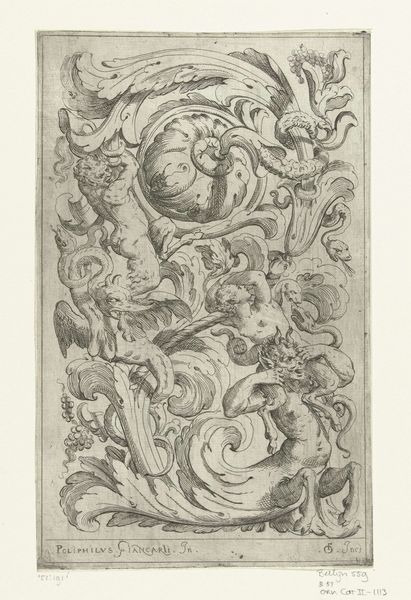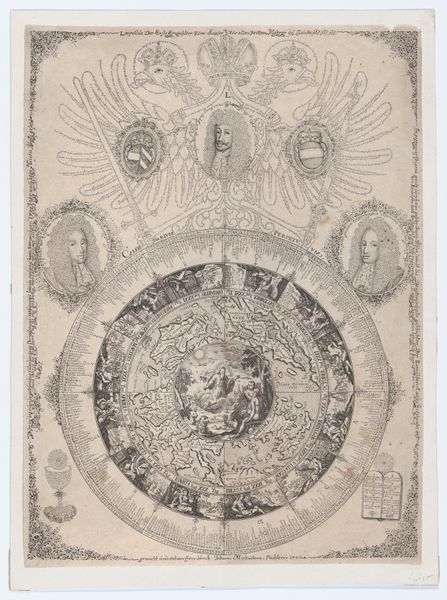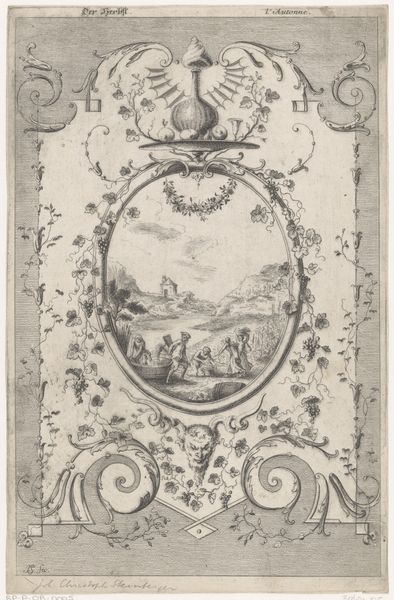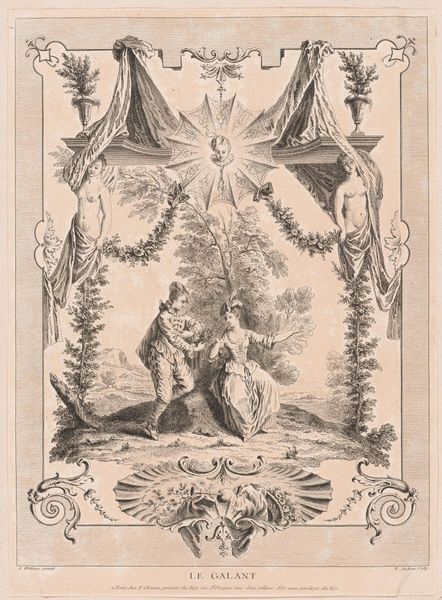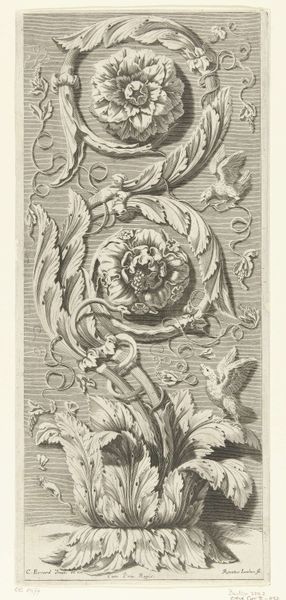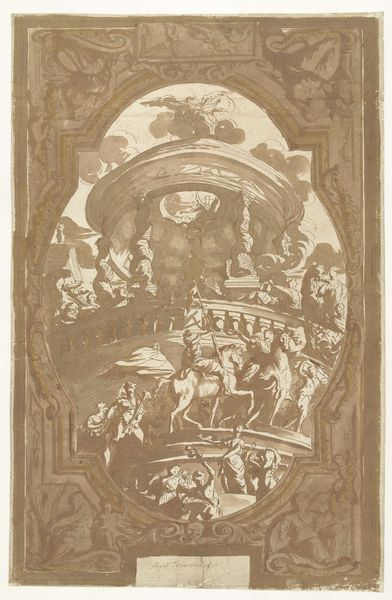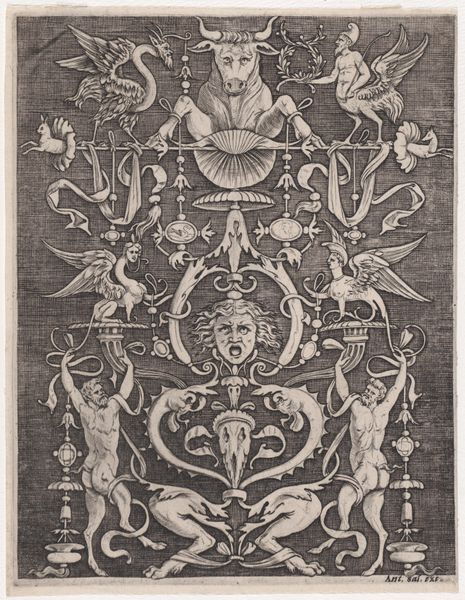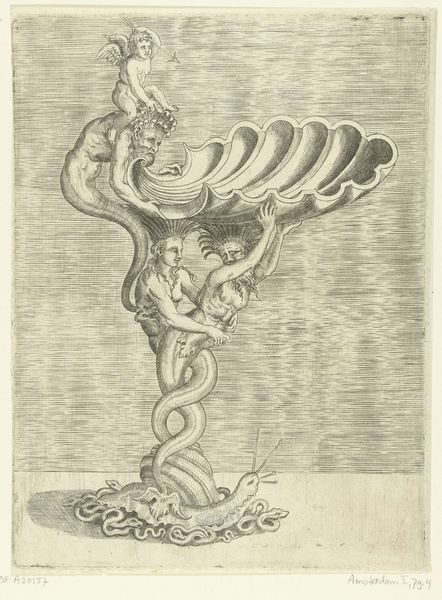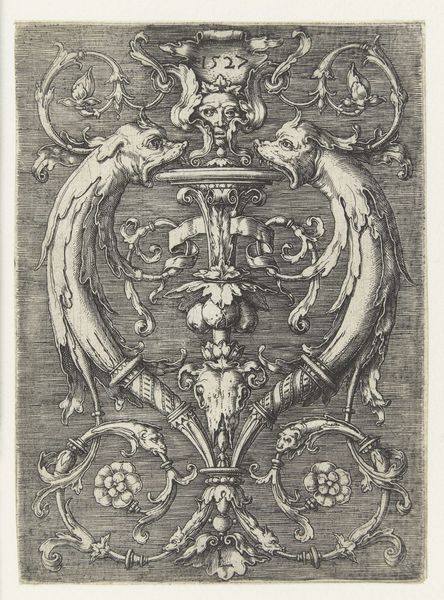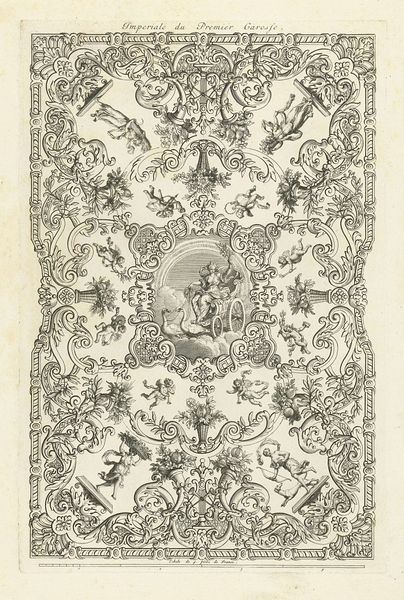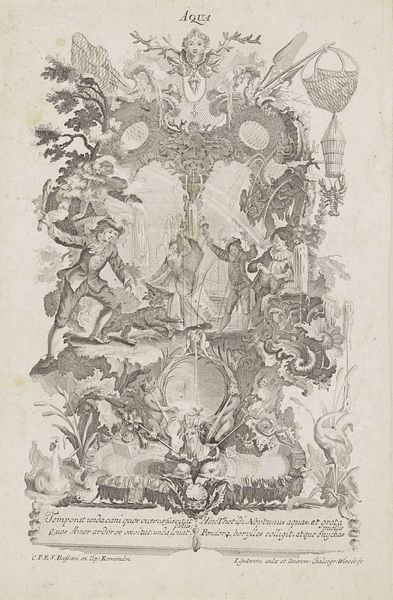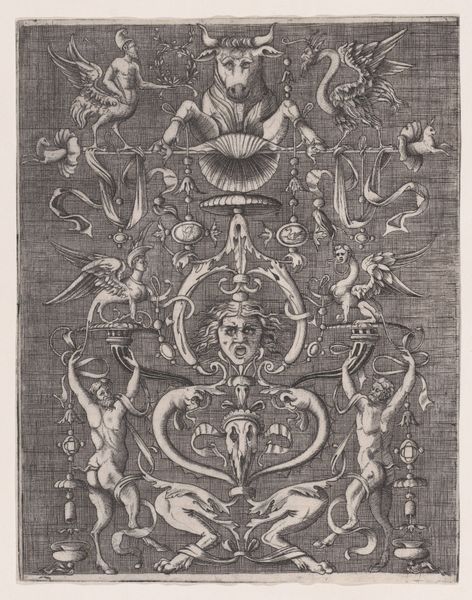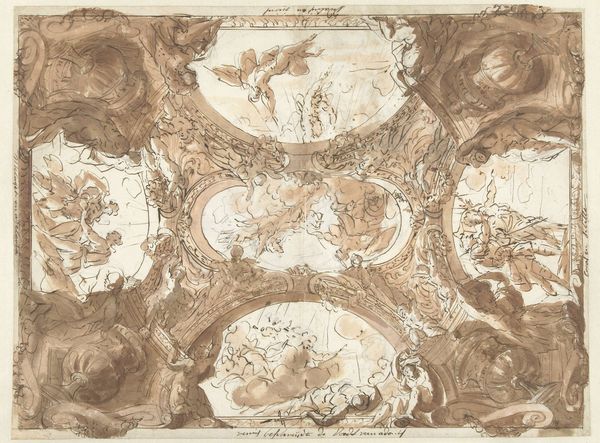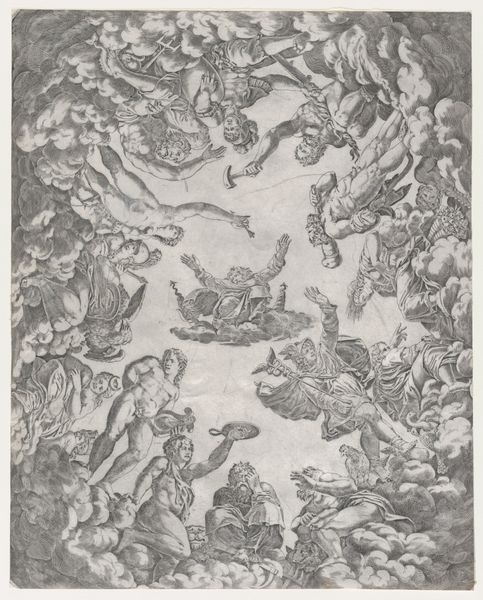
print, engraving
#
narrative-art
#
baroque
# print
#
old engraving style
#
figuration
#
engraving
Dimensions: height 337 mm, width 219 mm
Copyright: Rijks Museum: Open Domain
Editor: This engraving, “Schepping van hemel en aarde,” or "Creation of Heaven and Earth," is possibly from the early 18th century by Herman Coets. It's dominated by this large orb and surrounded by figures that look like cherubs. What strikes me is the material itself; it's not painting, not sculpture, but a print. How should we interpret this work? Curator: Well, first, notice that it's an engraving. The process of creating the image by manually incising lines into a metal plate demands attention. Each line, each cherub, represents labor. Consider also that engravings are reproducible. This wasn't a unique artwork for a single patron; it was designed for wider distribution, fitting into the burgeoning print market. How does that affect its value, do you think? Editor: That's fascinating! So, the very act of creating multiple copies democratizes the image, removing it from an exclusive context, possibly a wealthy one? It becomes more accessible. Curator: Exactly. And think about the paper itself. Its production involved its own kind of labor, its own networks of trade. This wasn’t merely a depiction of a biblical scene, but an object deeply embedded in the economic and social systems of its time. Does the depiction of religious figures then also reflect contemporary social hierachies in your eyes? Editor: That's a good question, now that you put it this way, maybe it does. The way God is at the top might be showing his rank. Curator: Precisely! And the cherubs themselves - where do they get the materials for the robes and the musical instruments? It's all about questioning where it comes from, and who makes it. Editor: Okay, this perspective changes everything! Thank you. I'll never look at an engraving the same way again. Curator: That’s exactly the point. It’s about peeling back the layers of production and consumption.
Comments
No comments
Be the first to comment and join the conversation on the ultimate creative platform.
